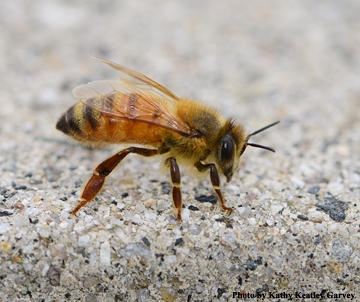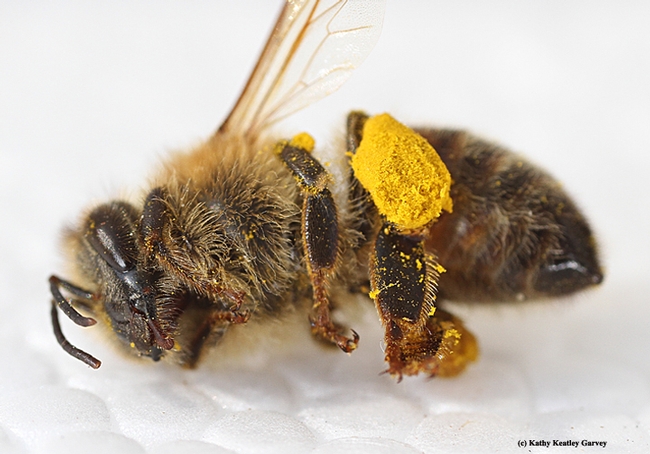
The email arrived in my UC Davis inbox at 9:10 a.m., Thursday, Jan. 8.
An employee from the UC Davis Plumbing Shop wondered what was happening in front of the Robert and Margrit Mondavi Center for the Performing Arts on the UC Davis campus. "There are dead bees everywhere," he wrote, adding that "There were some grounds workers waiting for the UC Davis bus in front of Mondavi, and they commented that they also saw dead bees everywhere in their grounds-keeping areas."
Did the cold spell have something to do with this? But why would honey bees be outside their colony? Honey bees don't fly until the temperature reaches around 55 degrees.
What was happening?
Super sleuth Extension apiculturist (retired) Eric Mussen of the UC Davis Department of Entomology and Nematology, arrived on the scene. He was appropriately dressed in a trenchcoat, a la Sherlock Holmes (Note that Sherlock Holmes, aka physician Sir Arthur Conan Doyle, was a beekeeper, too, according to Wikipedia).

Mussen, who retired last June after 38 years of service, picked up some of the dead bees and noticed that nearly half had small-to-large pollen loads on their legs. Their wings were not tattered. He quickly deduced that the bees had not worn themselves out foraging.
"However, this early in the season, many of the foraging bees are bees that survived since last fall," Mussen said. "Depending upon their overall health, they were working toward the ends of their lives."
Mondavi house manager Kerrilee Knights showed him dead bees on an upper outdoor patio. So the bees were not only dying at ground level but upper levels, Mussen realized.
He noticed some bees flying up over the roof and some live bees "resting" on various parts of the building.
"There's a colony up there somewhere," Mussen said, pointing toward the roof.
Mussen cupped some of the sluggish bees in his hands, and once warmed, off they flew. The other survivors? They were too cold to fly and they would die overnight as the temperature dropped.
Mystery solved. "Elementary, my dear Watson?" No, not really. It's a scene that non-beekeepers rarely see.
"So, it appears that an older population of bees from a colony nesting around the top of the building were foraging near the ends of their lives," Mussen said. "They could not adequately produce enough body heat to keep foraging and they could not adequately produce enough body heat to fly back to their colony and they were falling to the ground, basically exhausted."
"This is normal and no reason for alarm," Mussen said, "except that people usually are not that close to bee colonies to notice the normal demise of substantial numbers of overwintering bees."
So, it wasn't pesticides, pests, diseases, malnutrition or stress.
Old bees and a cold spell...
Attached Images:

This dead honey bee with a load of pollen was among dozens found outside the Robert and Margrit Mondavi Center for the Performing Arts on the UC Davis campus. (Photo by Kathy Keatley Garvey)

Bee guru Eric Mussen explains bee behavior to Mondavi house manager Kerrilee Knights. (Photo by Kathy Keatley Garvey)

Dead bees, with pollen loads intact. (Photo by Kathy Keatley Garvey)